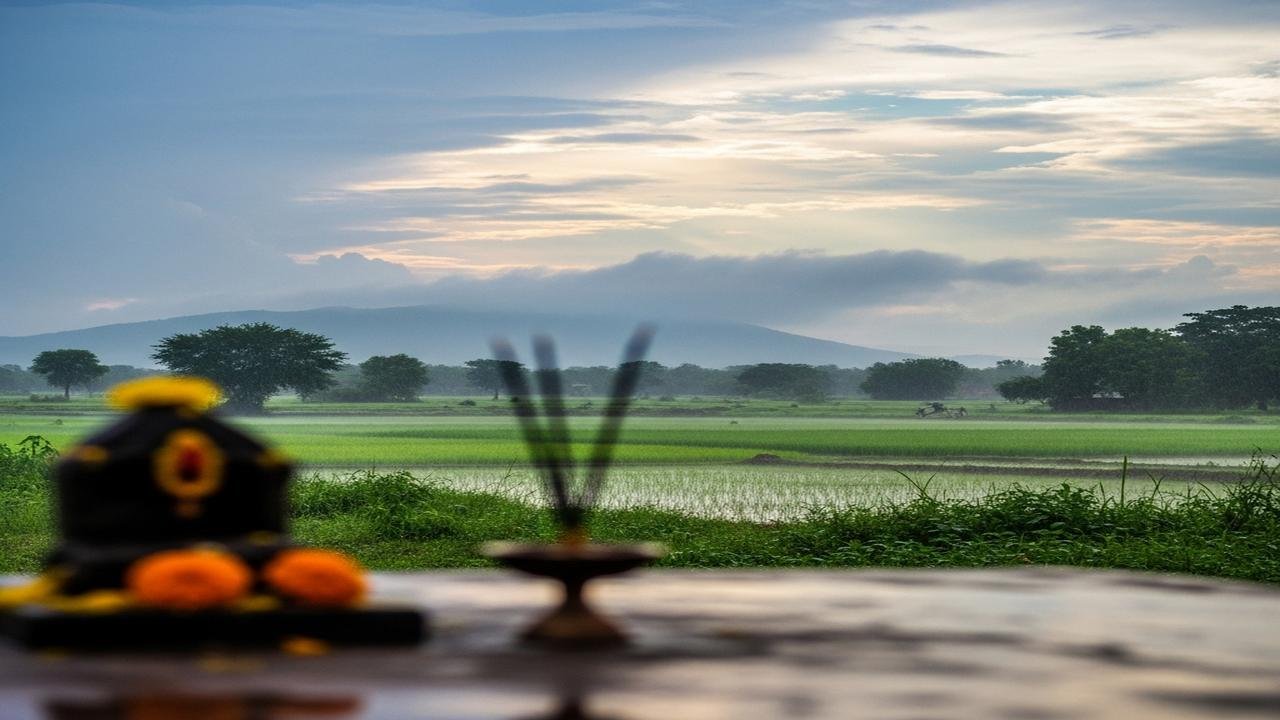Chaturmas: Why Hindus Observe Four Months From June To October

What Chaturmas is
Chaturmas — literally “four months” — refers to the annual four‑month period in the Hindu lunar calendar when many observant Hindus change rhythms of worship, food, travel and social life. The period is typically counted from Devashayani Ekadashi (the eleventh lunar day of the waxing/waning cycle in the month of Ashadha, usually June–July) until Prabodhini Ekadashi (the eleventh day of Kartika, usually October–November). Exact dates follow the panchanga (Hindu almanac) each year because Chaturmas is tied to tithis (lunar days).
Historical and seasonal background
Chaturmas is rooted in seasonal, agricultural and ecological realities. The four months correspond to the Indian monsoon season and post‑monsoon period when travel is difficult and the risk of harming small lifeforms increases. Traditional injunctions against long pilgrimages and lavish outdoor celebrations during these months have a practical side: reducing harm to creatures, staying close to home, and conserving community resources during the rains.
Scriptural sources and theological frames
Various Puranas and ritual manuals refer to a period when the deity rests or changes mode and devotees enter a phase of intensified discipline. In many Vaishnava accounts, Vishnu is said to enter his cosmic sleep (yogasayana) at Devashayani Ekadashi and awaken at Prabodhini Ekadashi; devotees therefore observe special vows and austerities. Shaiva, Shakta and Smarta traditions also mark the season as a time for retreat, penance and scriptural study, though emphases differ. Texts and commentators vary in prescriptions; some prescribe strict fasting and ritual seclusion, while others emphasize charity, reading and simple lifestyle changes.
How people observe Chaturmas: common practices
- Fasting and food rules. Many undertake upavasa — fasting — in varied forms: strict Ekadashi fasts (fasting on the two Ekadashis that bound the period and other Ekadashis inside it), weekly partial fasts, or single‑meal days. Specific foods may be avoided (onions, garlic, alcohol, and meat are commonly excluded across many communities). The exact rules differ by lineage and household custom.
- Increased sadhana (spiritual practice). Devotees add or intensify practices such as japa (mantra repetition), daily scriptural reading, bhajan/kirtan, and temple seva. Many Vaishnavas perform special Tulsi (sacred basil) worship during this season.
- Reduced travel and social restraint. Weddings and certain public celebrations are traditionally postponed; extensive travel, especially long pilgrimages, is discouraged in many regions during Chaturmas.
- Charity and care for animals. Almsgiving, feeding of birds and animals, and acts of service are encouraged. Some houses and temples increase practical care for animals displaced by rains.
Variations across traditions
There is no single uniform Chaturmas practice. Examples of diversity include:
- Vaishnava contexts often emphasize Ekadashi observance, Tulsi rites and devotional seva to Vishnu or Krishna during the deity’s “rest” period.
- Shaiva and Shakta communities may use the period for intensified ascetic practices, tantric observances, or concentrated study of agamas and tantras, with different dietary and ritual rules.
- Smarta households may follow a mixed pattern, balancing modest dietary restrictions, temple attendance, scripture reading and charity.
- Regional practices differ. For instance, some rural communities treat Chaturmas primarily as an agricultural pause and a time for domestic rites; urban temple schedules adapt differently.
Cultural and communal effects
Chaturmas shapes the social calendar. Many temples change their ritual timetables; itinerant ascetics may find stationary retreat; and communities delay marriages and large festivities. Economically, artisans and performers who depend on festival seasons experience a slowdown, while local ritual professionals may see more demand for home‑based rites and observances. The season fosters communal care networks for feeding the needy and attending to animals affected by heavy rains.
Symbolic and spiritual meanings
Scholars and practitioners point to several layers of meaning. At one level Chaturmas models restraint: withdrawing from habitual social display to cultivate inward discipline. At another it aligns human life with ecological rhythms, honouring seasonal cycles and reducing harm during a vulnerable time. For many devotees it is a concentrated opportunity for steady sadhana, repentance, and ethical review — a micro‑retreat within the year.
Modern adaptations
Contemporary observance often balances tradition and practicality. Urban Hindus may adapt strict fasts to modern work schedules, observe modified dietary rules, or focus on devotional time rather than full ascetic seclusion. Temples and organizations announce specific programmes (study circles, online discourses, community feeding) to help people maintain commitment amid modern life. Commentators across schools caution against ritual formalism and stress the interior purpose of the practices.
Practical notes and cautions
Fasting practices vary widely in intensity. If you have medical conditions, are pregnant, elderly or have other health concerns, consult a healthcare provider before undertaking prolonged fasts or severe dietary restrictions. Also consult your tradition’s priest or elder for locally authoritative guidance on the exact tithis, rules and customary practices for your community.
Conclusion
Chaturmas remains a living, plural phenomenon: ecological prudence, ritual discipline and devotional intensification converge in a four‑month rhythm that communities interpret in many ways. Whether taken as a season of rest for the deity, a call to ethical restraint, or a structured chance for deeper sadhana, Chaturmas continues to shape religious life across Hindu traditions while offering a recurring moment for reflection, service and renewal.
